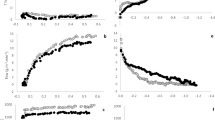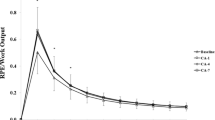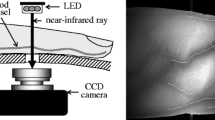Abstract
The purpose of this study was to monitor changes in body and skin temperatures, heat production, subjective shivering, cold sensation and body fat content in humans after intermittent cold water immersion. Repeated exposures of young sportsmen to cold water (head out, 14 °C, 1 h, 3 times per week for 4–6 weeks) induced changes in regulation of thermal homeostasis. “Cold acclimated” subjects exhibited an hypothermic type of adaptation. Central and peripheral body temperatures at rest and during cold immersion were lowered. The metabolic response to cold was delayed and subjective shivering was attenuated. The observed hypothermia was due to the shift of the threshold for induction of cold thermogenesis to lower body temperatures. “Cold acclimated” subjects also showed a lowered cold sensation. Because of the observed physiological changes, about 20% of the total heat production was saved during one cold water immersion of ‘cold acclimated” subjects. Maximal aerobic and anaerobic performances were not altered. No change in the thermosensitivity of the body temperature controller, as assessed from the unchanged slope of the relation between the deep body temperature and total heat production, was observed. Changes in cold sensation and regulation of cold thermogenesis were noticed first after four cold water immersions and persisted for at least 2 weeks after termination of the adaptation procedure. A trend towards a small increase in the body fat content was also observed. This finding, as well as the increased vasoconstriction, evidenced by the lowered skin temperature, indicate that slight changes in body insulation may also occur after “cold acclimation” in humans.
Similar content being viewed by others
References
Benzinger TH, Pratt W, Kitzinger C (1961) The thermostatic control of human metabolic heat production. Proc Nat Acad Sci USA 47:730–739
Bittel JHM (1987) Heat debt as an index for cold adaptation in men. J Appl Physiol 62:1627–1634
Bittel J (1992) The different types of general cold adaptation in man. Int J Sports Med 13:S172-S176
Boutelier C, Livingstone SD, Reed LD, Bougues (1978) Changes in cold-acclimated and non acclimated subjects following a 17-day arctic winter exposure. In: New trends in thermal physiology. Masson, Paris, pp 173–175
Brück K, Baum E, Schwennicke HP (1976) Cold-adaptive modifications in man induced by repeated short-term cold exposures and during a 10-day and -night cold-exposure. Pflügers Arch 363:125–133
Davis TRA (1972) Chamber cold acclimatization in man. J Appl Physiol 16:1011–1015
Heller J, Bunc V, Jürimäe T, Smirnova T, Karelson K (1991) Anaerobní zátězové “all-out” testy: Volba typu a doby trvání zátěze. Cas Lek Cesk 130:164–168
Heller J, Pešek J, Dlouhá R, Bunc V, Novotný J (1992) Changes in perimetry at maximal load in young and adult ice hockey players. Acta Univ Carol [Gymn] 28:63–71
Hong SK (1963) Comparison of diving and non-diving women of Korea. Am Soc Exp Biol 22:831–833
LeBlanc J (1956) Evidence and meaning of acclimatization to cold in man. J Appl Physiol 9:395–398
Pařízková J (1977) Body fat and physical fitness: Body composition and lipid metabolism in different regimes of physical activity. Martinus Nijhoff The Hague, pp 24–51
Pugh LGCE, Edholm OG (1955) The physiology of Channel swimmers. Lancet ii: 762–768
Rennie DW, Covino BG, Howell BJ, Song SH, Kang BS, Hong SK (1962) Physical insulation of Korean diving women. J Appl Physiol 17:961–966
Rohles FH, Nevins RH (1973) Thermal comfort: New directions and standards. Aerospace Med 730–738
Scholander PF, Hammel HT, Hart JS, LeMessurier DH, Steen J (1958) Cold adaptation in Australian aborigines. J. Appl Physiol 13:211–218
Wyndham CH, Plotkin R, Munro A (1964) Physiological reactions to cold of men in the Antarctic. J Appl Physiol 19:593–597
Young AJ, Muza SR, Sawka MN, Gonzalez RR, Pandolf KB (1986) Human thermoregulatory responses to cold air are altered by repeated cold water immersion. J Appl Physiol 60:1542–1548
Author information
Authors and Affiliations
Rights and permissions
About this article
Cite this article
Janský, L., Janáková, H., Uličný, B. et al. Changes in thermal homeostasis in humans due to repeated cold water immersions. Pflügers Arch — Eur J Physiol 432, 368–372 (1996). https://doi.org/10.1007/s004240050146
Received:
Accepted:
Issue Date:
DOI: https://doi.org/10.1007/s004240050146




